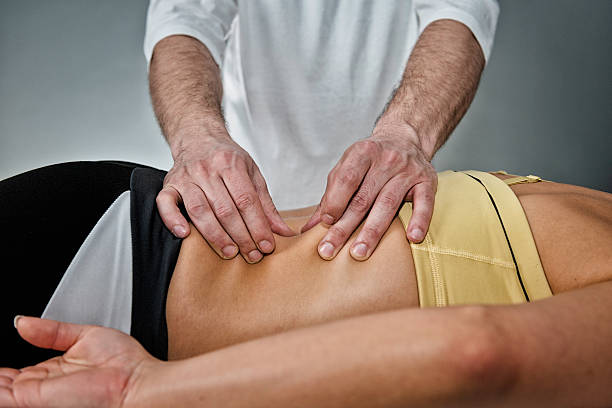SOFT TISSUE RELEASE -
Soft tissue release (STR) is a hands-on manual therapy technique used to assess and treat the tissue of the body. The soft tissues of the body are prone to acute and chronic injury, which leads to swelling, adhesions and fibrosis (scarring) of the tissue. This type of injury often results in pain, loss of mobility, strength, and function. STR aims of removing scar tissue and adhesion to relieve muscular tension and pain. The technique involves performing a precise stretch on a certain muscle through movement. The therapist identifies the area of tension through palpation and this area becomes the target for stretching. STR uses precise pressure combined with active or passive stretching. Your therapist will press onto a muscle to create a ‘lock’. This effectively shortens the usable length of muscle. Then the therapist will stretch the muscle or instruct you to move to actively stretch the muscle. Your therapist may choose to work around an injury rather than directly on it. However, STR can have rapid positive effects on flexibility and pain.
STR is a dynamic, highly effective technique that has an immediate and powerful effect on muscle and connective tissue. STR is a combination of Myofascial Release, Therapeutic Massage, and Active Assisted Stretching. Through STR targeted muscles return to the proper resting length, muscle imbalances are corrected, associated pain is decreased, and muscle performance is improved. Results are often obtained quickly and permanently. STR can be applied to soft tissue injuries in both acute and chronic situations. Soft tissues primarily include muscles, tendons, fascia, ligaments, skin, synovial membranes, fat, blood vessels, and nerves. By evaluating and manually manipulating these, therapists can provide support for neuromusculoskeletal system. Stretching, a popular method for relieving pain and tension in the muscles, also helps to correct the alignment of the body. However, in some clients with tight muscles, the affected muscle may not be uniformly tight—only a few fibers may be affected by tension or adhesion. Basic stretching may not be sufficient to lengthen and release these few tangled fibers, and clients may experience only temporary relief from basic stretching.

TYPES OF SOFT TISSUE RELEASE -
There are three general types of soft tissue release:
- Passive, in which the therapist starts movement.
- Active, in which the client starts movement while the therapist assists.
- Weight-bearing, in which the client starts movement while the therapist assists. This technique helps return muscles to full function.
Passive STR – Passive work provides a good release and can be very relaxing.
Active STR – It is more powerful and should be preceded by passive work or other massage to warm up the area. Progression to active work is more energy efficient.
Applying Resistance – Applying resistance during active STR may enhance the release in some cases. As person attempts to produce a stretch but is resisted by the therapist while doing so.
Weight-Bearing STR – It is highly effective in returning an area to full function. The muscles are under tension, and a degree of eccentric contraction will be occurring to control the required movement. Manipulation under this tension may be very severe and should therefore be the last stage in any treatment program.
BENEFITS OF SOFT TISSUE RELEASE -
- Reduction of inflammation of joints and heart rate
- Improved range of motion
- Releases endorphins
- Decreases muscle spasms and cramp.
- Improves oxygen flow.
- Decreases blood pressure.
- Increases hemoglobin production.
- Enhancement in athletic performance
- Ease stiffness and pain in arthritis sufferers
- Eases discomfort associated with pregnancy and menopause.
- Reduction in symptoms of fibromyalgia
- Improve Circulation
- Increase Flexibility
- Improves Sleep
- Reduce Pain
- Relaxes the muscles.
- Release Trigger Points
CONDITIONS TREATED BY STR -
- Tendonitis
- Medial epicondylitis (golfer’s elbow)
- Lateral epicondylitis (tennis elbow)
- Chronic pain
- Arthritis
- Breathing issues
- Headaches and migraines
- Strains
- Arthritis
- Carpel tunnel syndrome
- Whiplash Injury